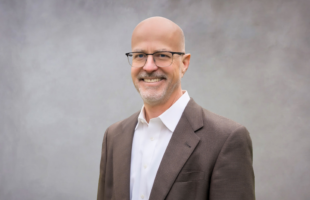There is an industry perception that when it comes to computer-based production, Singapore is just an execution house, primarily involved in servicing, rather than developing a project. But this view is changing as the craft of CG in Singapore slowly but steadily matures, in part due to a steady infl ux of global talent and a growing local pool of animators who have honed their skills in VFX houses overseas.
At the recent Animation Symposium held as part of the Singapore International Film Festival, show reels from industry heavyweights such as Industrial Light and Magic (ILM) Singapore, Infi nite Frameworks (IFW), Double Negative Singapore and Sparky Animation displayed high-end visual feasts from TV productions to summer blockbusters, with a majority of the shots done by animators based in Singapore and in the case of Infi nite Frameworks, a ferry ride away in Batam, Indonesia.
“I’ve been in Singapore six years, and I’ve seen a real revolution on the type of work Singapore is doing,” moderator Phillip Stamp commented. Stamp, who co-founded Singaporebased 3D animation production and VFX studio One Animation, also helped set up and train Lucasfi lm Singapore’s animation department as its animation director in 2005.
Just a few years ago, it was difficult for animation studios in Singapore to play a major role in co-productions. Home-grown Sparky Animation’s founder and CEO K.C. Wong said, “In the early years we only worked on modelling, texturing, rigging. You have to be patient, and prove yourself. You need a lot of hard work to convince them that we are equally good (in Singapore).”
Sparky Animation focuses on CG animation, and has co-produced the highly successful TV series Dinosaur Train with the Jim Henson Company. These days its 160 staff cover about 70 per cent of various CG projects in its Singapore studio. “In the latest project we are signifi cantly involved in design. We’re basically involved in reading the script,” Wong said.
ILM Singapore has also taken on a bigger role since it was set up in 2005 as a division of ILM in San Francisco. “When we started, there was a very limited range of work that we were able to do. Really for us the watershed project was Transformers 3, where over 270 shots were done entirely in Singapore, everything from match moves of the shot, to the animation of the shot,” ILM VFX producer Stuart McAra said.
IFW started out just providing services to advertising agencies and production companies. “You just get told what to do, and you get paid,” said co-founder Mike Wiluan. “It pays the bills and you develop yourself in terms of skillset, but we’ve really evolved from that.”
The studio has taken on more coproductions over the years, most recently collaborating with director Eric Khoo for the hauntingly beautiful 2D animation Tatsumi, which screened at Cannes earlier this year.
“For us, there’s two types of evolvement: one, is a studio that’s evolving in terms of capability, learning technically and creatively. But it doesn’t mean you evolve in terms of position because you could be always providing services, and you may be the best, but you may not be collaborating,” Wiluan said. “Second to that is positioning. We’ve positioned ourselves as a studio that’s co-producing and owning content. That’s a dream I’ve had for a long time. It’s not easy to get that into reality. Everyone has ideas, everyone wants to create, but it takes money, and it takes time. You’ve got to have the right people in the right place.”
IFW is strengthening this message by opening a sound stage in Batam and recruiting global heavyweights Dayne Cowan and Ian Bailie to develop projects there. Cowan is a VFX veteran of three Harry Potter fi lms, while production designer Bailie has worked on fi lms such as Pride and Prejudice, Atonement and most recently, The Blue Mansion. With the opening of the Batam soundstage and the building of another soundstage at Mediopolis media hub in Singapore, the company is repositioning itself as Infi nite Studios, and taking on more co-productions.
“To create, in a way you’re in charge of your own destiny. Producers still need to think twice before coming to Singapore. If you create, you increase your chances of working, so there’s a practically to that,” Wiluan added.
Creativity and more specifi cally, a passion for this line of work, is something all the panelists agree young animators could use more of, particularly in Singapore. “The end results of what people are doing may vary from company to company, there’s actually a lot of similarities in people’s backgrounds, people’s motivations, and what people bring into the work themselves both creatively and in managing teams of artists,” said Stamp.
“Jurassic Park got me interested in the possibilities of using my interest in art in this new fi eld of computer graphics,” said Bertrand Ong, head of 3D at Double Negative Singapore. “My work has taken me to the US, to Australia, and back to Singapore.”
Similarly, IFW’s Dayne Cowan moved toward computer graphics while pursuing his computer science degree in Australia. Beyond creativity and technical skills, drive and persistence he said, are key to making it in this industry. “You can learn the software, you can learn the hardware very quickly. Anyone can pick up a paintbrush and sketch something on a piece of paper, but what sort of result of are you going to get?” Cowan pointed out.
“All those techniques you go through to turn it from just something you can do, into a craft. What’s it like to get criticized by a director and have your work bounced back several times? How do you deal with a situation where you just can’t get something to look right and you’re working to a brief? All these things become part of your toolkit as you grow and develop.”
Whether working for a small execution house or as one of hundreds working to a brief, the ones who last in the business, panelists agree, are those who continue to fi nd avenues for their creativity while paying their dues in the industry. After all, if Singapore’s animation industry is to thrive, content has to be driven not by the technology but the people.








